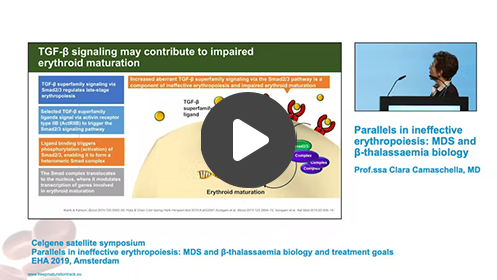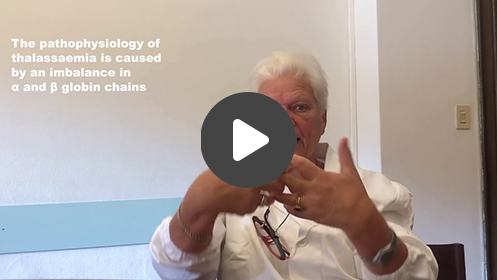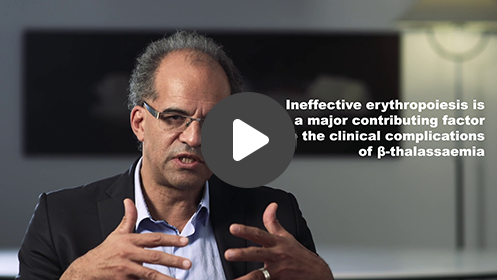Myelodysplastic syndromes (MDS)
MDS are a diverse and heterogeneous group of disorders characterised by ineffective haematopoiesis, dysplasia in haematopoietic cells, cytopenias and increased risk of progression to acute myeloid leukaemia.5,6 Over 80% of patients with MDS experience anaemia.7 Mutations involving signalling molecules, epigenetic regulators, splicing factors and transcription regulators are present in most cases of MDS.5
Other haematological diseases
Aplastic anaemia
Aplastic anaemia is a blood disorder characterised by bone marrow failure causing an inability to produce blood cells and a deficit in haematopoietic stem cells and progenitor cells.11,12 This leads to pancytopenia and various symptoms such as fatal anaemia, bleeding and infection.11,12 The causes of aplastic anaemia include viral infection, environmental toxins and genetic mutations in genes affecting cellular mechanisms, which lead to bone marrow failure through physical or chemical damage, immune destruction or constitutional genetic defects.11
Myelofibrosis
Myelofibrosis is a myeloproliferative neoplasm characterised by ineffective stem cell-derived clonal haematopoiesis, bone marrow stromal reaction including reticulin fibrosis, abnormal cytokine expression, and extramedullary haematopoiesis.13 This leads to a vast array of symptoms including hepatosplenomegaly and severe anaemia.13 Ineffective erythropoiesis is the main cause of anaemia and it is thought that the aberrant cytokine production and host immune reaction contribute to this.13
Sickle cell anaemia
Sickle cell disease describes a group of inherited disorders characterised by abnormal haemoglobin molecules, haemoglobin S, which are caused by a point mutation in the β-globin chain.14 In sickle cell anaemia, the most common form of sickle cell disease, both β-globin subunits of the haemoglobin molecule are replaced by haemoglobin S.15 This leads to intravascular vaso-occlusion, stroke, priapism, and acute chest syndrome.14 Symptoms vary from person to person with some experiencing mild symptoms and others encountering more serious complications.15
Congenital dyserythropoietic anaemias
Congenital dyserythropoietic anaemias belong to a group of inherited conditions characterised by anaemia due to ineffective erythropoiesis with distinct morphological abnormalities of erythroblasts.16 These disorders result in variable degrees of anaemia without additional cytopenias.17
Inherited sideroblastic anaemias
Sideroblastic anaemia includes a group of heterogeneous disorders, characterised by the accumulation of iron in immature erythroid cells, which are referred to as ringed sideroblasts.3 The ineffective erythropoiesis characteristic of patients with inherited sideroblastic anaemia is caused by mutations in the genes involved in the initial stages of haem synthesis. Reduced haemoglobin and iron overload cause disease symptoms that range from mild to severe.3,18



